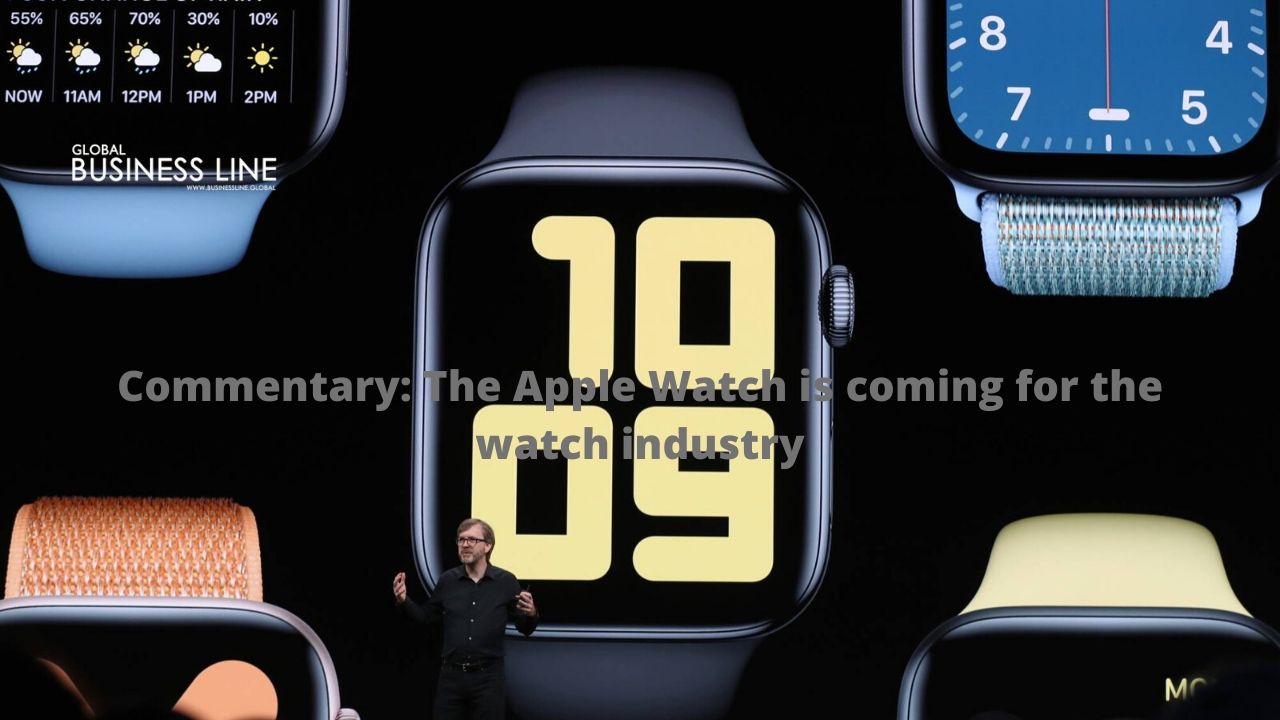The accomplishment of smartwatches follows the prosaism of programming eating equipment, as we have seen with cameras, adding machines and DVDs, says the Financial Times’ John Thornhill.
LONDON: The watch business has consistently shown a solid dash of monetary silliness.
All things considered, you can purchase a Casio advanced watch for £5 (US$6.50) that will tell the time more dependably than a mechanical Patek Philippe Grand Complications costing 40,000 fold the amount.
As the publicizing motto goes, each watch recounts to a story. What’s more, the story the watch business tells is that a large number of individuals will pay a huge premium for style over capacity.
Or on the other hand, as Ralph Lauren put it rather more wonderfully, a fine watch, similar to an all around structured vehicle, is best refreshing as “moving workmanship”.
In any case, financial unreasonableness has its points of confinement. Also, the Apple Watch has been cruelly uncovering them by offering a drastically unique sort of usefulness and an altogether different sort of style.
As indicated by inquire about firm Strategy Analytics, the Apple Watch, propelled under five years prior, presently surpasses the whole Swiss industry, which has been producing wristwatches for a long time.
A year ago, Apple expanded deals by 36 percent to very nearly 31 million watches while the Swiss business dispatched around 21 million altogether, a 13 percent decay.
The one comfort for Swiss watchmakers is that they despite everything create more income: US$21 billion to Apple’s US$11 billion. In any case, on current patterns Apple will surpass the Swiss on that measure, as well, by 2023.
NOT JUST A WATCH

Obviously, it would be a mix-up to think about the Apple Watch as only a watch. The achievement of smartwatches follows the inexorably unoriginal storyline of programming eating equipment, as we have seen with cameras, adding machines and DVDs.
Not exclusively does a smartwatch tell the time, it works as a wearable PC. Associated with an application store, a smartwatch can perform many different capacities, from sending and getting messages to observing pulses, menstrual cycles and glucose levels, from following untamed water swims to checking whether over the top clamor is harming your hearing.
Progressively, Apple sees its smartwatch’s prime capacity as a medicinal services gadget.
As per Sumbul Desai, Apple’s VP of wellbeing, the watch is a “mind boggling stage” that enables clients by giving them significant data about their wellbeing. It even offers an electrocardiogram application, which can give information to clinicians.
A few exercises can be drawn from the ascent of the smartwatch.
To begin with, it is hard now for any conventional industry to anticipate where their deadliest opponents will develop, given the changeability of rivalry.
Who might have thought in 1984, when Steve Jobs propelled the main Macintosh PC, that Apple would place such a gouge in the Swiss horological universe a couple of decades later?
Second, a keen item is in every case prone to beat an idiotic one. A customer’s capacity to associate their gadget to their own customized suite of uses furnishes a convincing motivation to stay with the equivalent arranged supplier.
Third, a major generational move is in progress as more youthful purchasers progressively live their lives on the web. Offers of customary watches to the youthful have dropped especially pointedly, with the smooth plans and elements of a smartwatch engaging more to the advanced age.
For the occasion, Apple rules the smartwatch business with an expected 50 percent piece of the overall industry.
Be that as it may, adversaries, for example, Google, which empowers Android smartwatches and as of late obtained Fitbit, and Garmin, the US wearable innovation organization, are forcefully focusing on this market, as well.
Some Swiss watchmakers, for example, Tag Heuer, have propelled their own smartwatches, in spite of the fact that Tissot’s arrangements to build up its own working framework appear to be uncontrollably aspiring.
The undeniable end is that Swiss watchmakers are bound to decay, similar to horsewhip producers in the age of the engine vehicle.
However everything is a long way from lost for the business.
René Weber, an extravagance expert at Bank Vontobel in Zurich, features the sharp differentiation in execution between the low and top of the line watch fragments.
Since 2000, Swiss watches costing under US$1,000 have seen their unit deals split, while watches costing more than US$5,000 have seen volumes triple.
Mr Weber says offers of the most renowned watches made by Rolex, Patek Philippe and Audemars Piguet have been minimal influenced by the smartwatch insurgency. In fact, there are hanging tight records for a portion of their top-finished results in light of limit requirements in assembling complex mechanical watches.
“You purchase these Swiss looks forever, though you discard a smartwatch following a few years,” he says. “It is an alternate sort of watch, an alternate sort of understanding.”

Shruthi M is a dedicated Business News Reporter at Global Business Line, specializing in breaking stories, insightful analyses, and comprehensive coverage of the global business landscape. With a keen eye for detail and a passion for delivering accurate and timely news, Shruthi keeps readers informed on the latest market trends, corporate strategies, and economic developments shaping industries worldwide.




